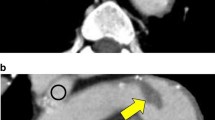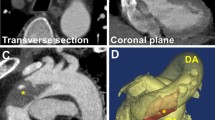Detection of mobile thrombus of the thoracic aorta has become increasingly common thanks to routine exploration using transesophageal echography (TEE) after any embolic event. Although the indication for treatment remains controversial, there is a growing interest in understanding this potential source of arterial emboli and in defining proper diagnostic and therapeutic approaches. The purpose of this study was to evaluate the utility of different diagnostic and therapeutic modalities used in our department over the last 6 years. Between 1995 and 2000, mobile thrombus of the thoracic aorta was diagnosed in 9 patients (5 men, 4 women) with a mean age of 49.2 years (range, 28 to 68 years). In all patients, aortic thrombus was suspected after a peripheral (n = 4) or cerebral (n = 5) vascular event. Treatment using intravenous heparin was attempted in all patients and allowed complete dissolution of thrombus in four. In the remaining five patients, repeat TEE demonstrated persistent thrombus and operative treatment was undertaken. In three patients with thrombosis in the aortic arch, thrombectomy was performed with cardiopulmonary bypass, and deep hypothermic circulatory arrest. In two patients presenting thrombosis in the descending thoracic aorta, thrombectomy was performed with an atriofemoral shunt. Thrombectomy was associated with repair of a wall defect in two patients and resection of atheromatous plaque in one patient. Postoperative recovery was uneventful but recurrence was noted in one patient because anticoagulation therapy was stopped too soon. On the basis of our experience and previous reports, we have defined the following therapeutic strategy. All patients are first treated with heparin. In case of failure, thrombectomy may be undertaken in young patients. Because of the highly invasive nature of the procedure, careful work-up including TEE should be performed to rule out any other cause of embolism and to determine that the lesion presents a high potential for embolism. Follow-up must include long-term coumadin therapy and routine surveillance using TEE or magnetic resonance imaging, since long-term outcome is unclear.
Similar content being viewed by others
Author information
Authors and Affiliations
About this article
Cite this article
Choukroun, E., Labrousse, L., Madonna, F. et al. Mobile Thrombus of the Thoracic Aorta: Diagnosis and Treatment in 9 Cases . Ann Vasc Surg 16, 714–722 (2002). https://doi.org/10.1007/s10016-001-0314-2
Issue Date:
DOI: https://doi.org/10.1007/s10016-001-0314-2




